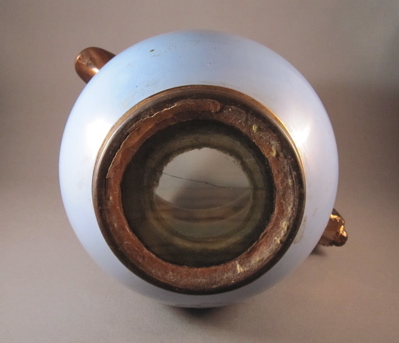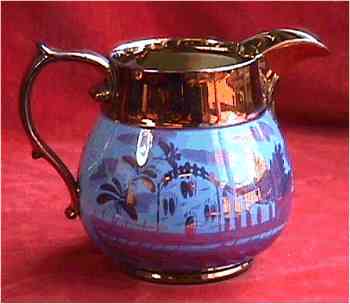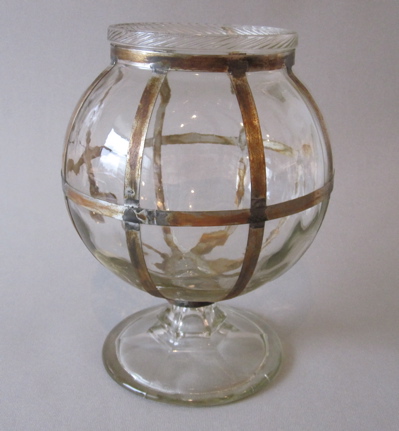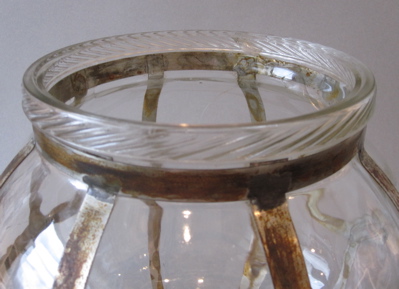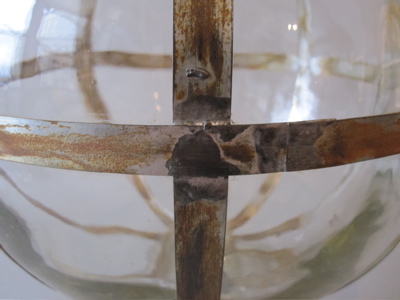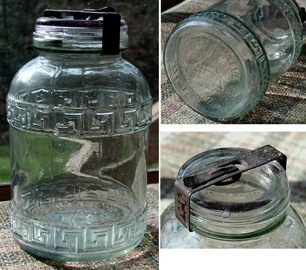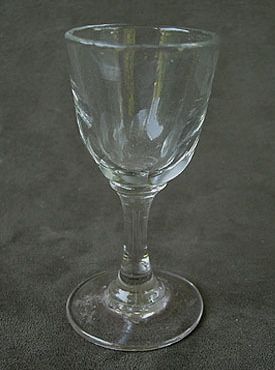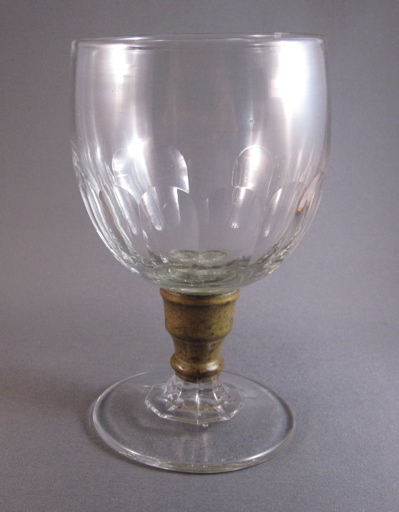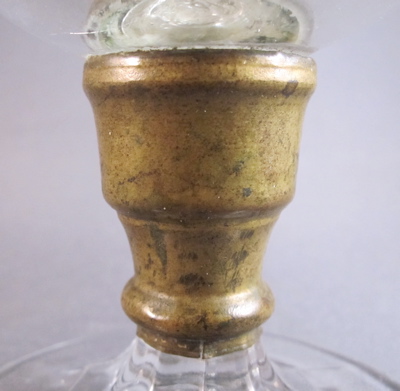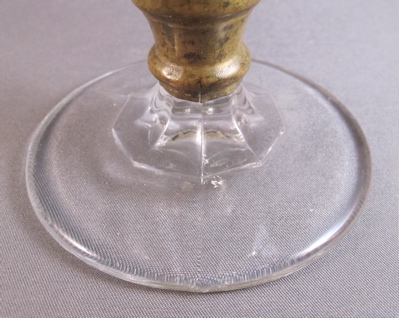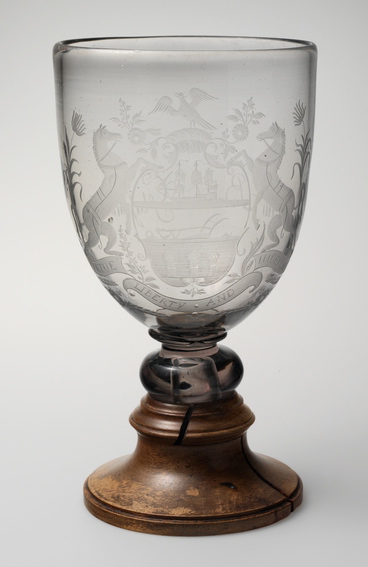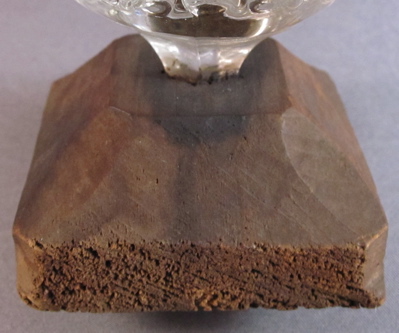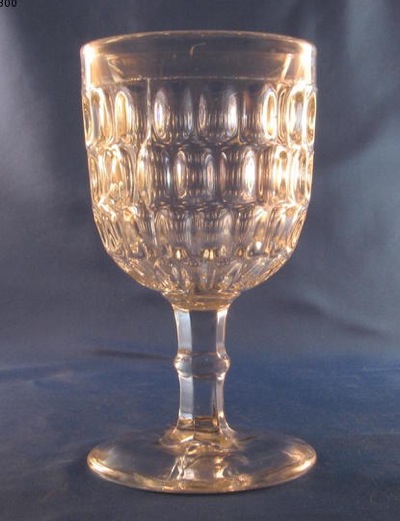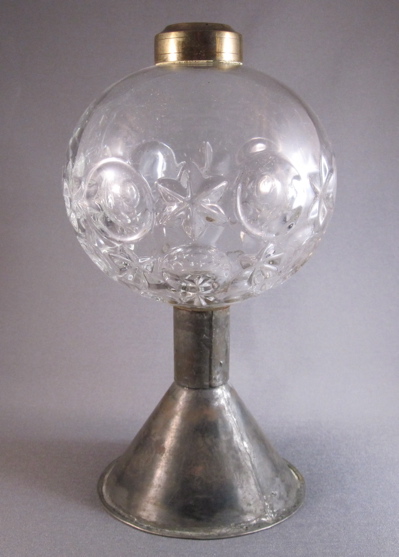A large copper lustre stout bodied baluster shaped jug from the Staffordshire region of England has a hidden inventive repair. Copper lustre decorated wares originated in the 9th century and were first made by Islamic potters. Inspired by these early pieces, English pottery houses Spode and Wedgwood developed their own techniques, starting at the beginning of the 19th century and continuing to around 1860. Silver lustre, once referred to as “poor man’s silver”, was another popular glaze created during this period and is highly prized today
Jug measures 6-1/4″ tall and is 8-1/2″ wide from spout to end of handle. The unusually wide blue band is curiously devoid of any decoration
The scrolled handle includes a small thumb rest at the top. A dramatic large gash reveals the red clay body beneath the glazed surface
Somehow the bottom of the jug broke or simply wore out. Today if this type of damage occurred, the piece would most likely be thrown out and replaced
A surprising glass patch covers the hole in the bottom, allowing the jug to hold liquids once again. An early form of putty was used to adhere and seal the glass piece to the bottom of the base
This copper lustre jug with a similar form and large blue band is overpainted with a more typical pink lustre decoration
Photo courtesy of Antiques Atlas




